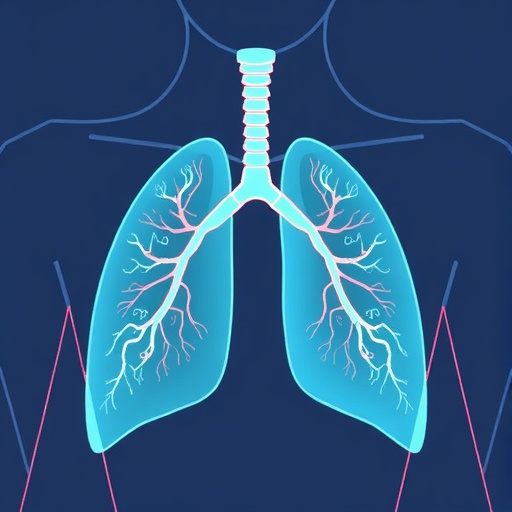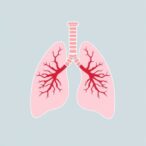
In an intriguing and groundbreaking study poised to reshape our understanding of lifelong respiratory health, researchers have turned a spotlight on adults who were born with very low birth weight (VLBW), mapping the trajectory of their lung function from young adulthood into mid-adulthood. This comprehensive investigation, published recently in Pediatric Research, offers unprecedented insights into the long-term pulmonary outcomes of individuals whose early life began with significant challenges. Their findings not only deepen scientific comprehension of VLBW sequelae but also hint at the broader implications for healthcare strategies tailored to this unique population.
The study meticulously followed a cohort of adults born with very low birth weight, defined as weighing less than 1500 grams at birth, over an extended period, capturing data originally in early adulthood and then reassessing lung function well into mid-adulthood. This longitudinal approach provided a rare window into the pulmonary health evolution of individuals initially at heightened risk of respiratory complications due to their premature and low-weight birth status. Prior studies have often focused on infancy and childhood outcomes, but this investigation breaks new ground by chronicling pulmonary dynamics over decades.
VLBW neonates often face a myriad of early respiratory challenges due to underdeveloped lungs and frequent respiratory interventions such as mechanical ventilation or oxygen therapy shortly after birth. These early insults are known to cause structural and functional changes in the lungs, yet the extent to which these effects persist, diminish, or worsen over time as these cohorts age has remained ambiguous. The study by Jussinniemi et al. fills this critical gap, revealing nuanced patterns in lung function trajectories that may redefine clinical expectations.
.adsslot_HwmIxgPWsU{ width:728px !important; height:90px !important; }
@media (max-width:1199px) { .adsslot_HwmIxgPWsU{ width:468px !important; height:60px !important; } }
@media (max-width:767px) { .adsslot_HwmIxgPWsU{ width:320px !important; height:50px !important; } }
ADVERTISEMENT
The multifaceted nature of lung development and injury in VLBW individuals necessitates careful interpretation of pulmonary function test results. The researchers utilized spirometry, diffusion capacity measurements, and body plethysmography to capture an array of functional parameters. Their analysis showed that, while some measures of lung function improved or stabilized after young adulthood, other parameters indicated persistent deficits that did not normalize even after decades. The heterogeneous nature of these findings underscores that pulmonary outcomes for VLBW adults cannot be universally predicted and require individualized clinical attention.
One of the more striking revelations was the persistence of lower-than-average forced expiratory volume (FEV1) in VLBW adults compared to matched controls, even into mid-adulthood. The FEV1 parameter, critical in gauging airway obstruction and pulmonary health, remained compromised in many participants, suggesting that early lung injury may induce chronic alterations that resist complete recovery. Such functional impairments elevate the risk of developing chronic obstructive pulmonary disease (COPD)-like conditions decades later and complicate the usual assumption that early adverse events are fully mitigated with maturation.
Simultaneously, the researchers observed that certain diffusion capacity measures, reflective of the lungs’ ability to transfer oxygen efficiently to the bloodstream, showed variable trajectories. Some subjects exhibited improvements, hinting at compensatory mechanisms or plasticity in lung tissue, while others revealed persistent or worsening deficits. This variability may be linked to diverse perinatal factors, genetic predispositions, or environmental influences, including smoking status and exposure to pollutants, which were carefully adjusted for in the analyses.
Importantly, the study also parsed the influence of bronchopulmonary dysplasia (BPD), a chronic lung disease often occurring in preterm infants requiring prolonged respiratory support. Adults who had a history of BPD showed more pronounced and sustained impairments in lung function, reinforcing the disease’s long-term impact. These results emphasize the necessity for early intervention and vigilant respiratory care throughout life for those with documented BPD history, especially as they age and accumulate additional pulmonary risk factors.
The team’s use of advanced statistical modeling allowed them to estimate the age-related decline in lung function rate more precisely within the VLBW population. They discerned that although all individuals experience some decline due to aging, VLBW participants exhibited an accelerated reduction rate in key lung function indices. This accelerated decline could compound earlier deficits, imposing greater risk for respiratory morbidity as this population enters their sixth decade and beyond, thereby highlighting a potential target for preventative healthcare measures.
This comprehensive evaluation delved beyond mere spirometric measures and expanded into evaluating the impact of comorbidities such as asthma and cardiovascular disease that might interplay with lung function changes. Some VLBW individuals developed higher rates of mild to moderate asthma, which exacerbated the pulmonary challenges. Moreover, the burden of cardiovascular risk factors, potentially linked to the systemic effects of prematurity and low birth weight, may further complicate the clinical picture by influencing pulmonary vascular health.
The timing and type of respiratory interventions received during the neonatal period also appeared influential. Participants who experienced less invasive ventilation strategies and had shorter oxygen supplementation durations tended to have better lung function trajectories decades later. These findings advocate for the continuous refinement of neonatal care practices to minimize lung injury and open avenues for novel protective strategies that might mitigate the lifelong impact of extreme prematurity.
Another captivating aspect of this research is its implication for future surveillance guidelines. Currently, long-term pulmonary follow-up is standard for childhood and adolescence in VLBW populations, but this study underscores the need for ongoing monitoring well into middle age and potentially beyond. Regular lung function testing can facilitate early detection of accelerated decline and timely interventions such as pulmonary rehabilitation, lifestyle modifications, or pharmacological treatments aimed at preserving lung health.
Beyond the direct clinical implications, the study enriches the biological understanding of lung development and resilience. It challenges the dogma that once childhood pulmonary hurdles are overcome, normal function can be completely restored. Instead, it proposes a more complex dynamic wherein early injury sets a structural and functional baseline vulnerable to cumulatively adverse aging processes, environmental insults, and secondary diseases—transforming our conceptual framework of lung health as a lifelong continuum influenced by neonatal antecedents.
Adding a broader societal perspective, these findings may inform public health policies addressing premature births and underscore the urgency of neonatal care resource allocation. As survival rates of VLBW infants improve worldwide, growing populations carry this vulnerable legacy into adulthood, pressing healthcare systems to prepare for increased chronic respiratory disease burdens that stem from early-life events, a consideration often overlooked in long-term strategic planning.
While the study primarily focused on a Scandinavian cohort, which benefits from comprehensive healthcare systems and data registries, the principles uncovered likely extend globally, albeit modulated by differences in neonatal care availability and environmental exposures. This universality amplifies the relevance of the findings and beckons for similar investigations in diverse populations to understand socio-geographic influences on VLBW pulmonary outcomes.
The research collectively asserts that being born with very low birth weight is a harbinger of enduring pulmonary challenges that do not simply fade into clinical history but persist and evolve over decades. For clinicians and scientists alike, the work by Jussinniemi and colleagues propels a shift toward recognizing the full lifespan respiratory implications of prematurity and low birth weight, urging a proactive, anticipatory healthcare approach designed to preserve lung function, enhance quality of life, and reduce premature respiratory morbidity and mortality.
As investigations continue into the cellular and molecular underpinnings of these lifelong changes, the hope is that targeted therapies may emerge to repair or restore damaged pulmonary tissue more effectively. Until then, the message is clear: the lungs of VLBW individuals bear the imprint of their earliest struggles throughout their lives, demanding attention, innovation, and compassion from the medical community.
Subject of Research: Lung function in adults born with very low birth weight from young to mid-adulthood.
Article Title: Lung function in adults born with very low birth weight from young to mid-adulthood.
Article References:
Jussinniemi, L., Benum, S.D., Aakvik, K.A.D. et al. Lung function in adults born with very low birth weight from young to mid-adulthood. Pediatr Res (2025). https://doi.org/10.1038/s41390-025-04246-z
Image Credits: AI Generated
DOI: https://doi.org/10.1038/s41390-025-04246-z
Tags: adult lung functionimplications for healthcare in VLBW populationlong-term respiratory healthlongitudinal study of VLBW adultsneonatal health and lung developmentpediatric research on lung functionpulmonary function in adulthoodrespiratory challenges in premature infantstracking pulmonary health from infancy to adulthoodvery low birth weight health outcomesVLBW and lifelong healthVLBW and respiratory complications



